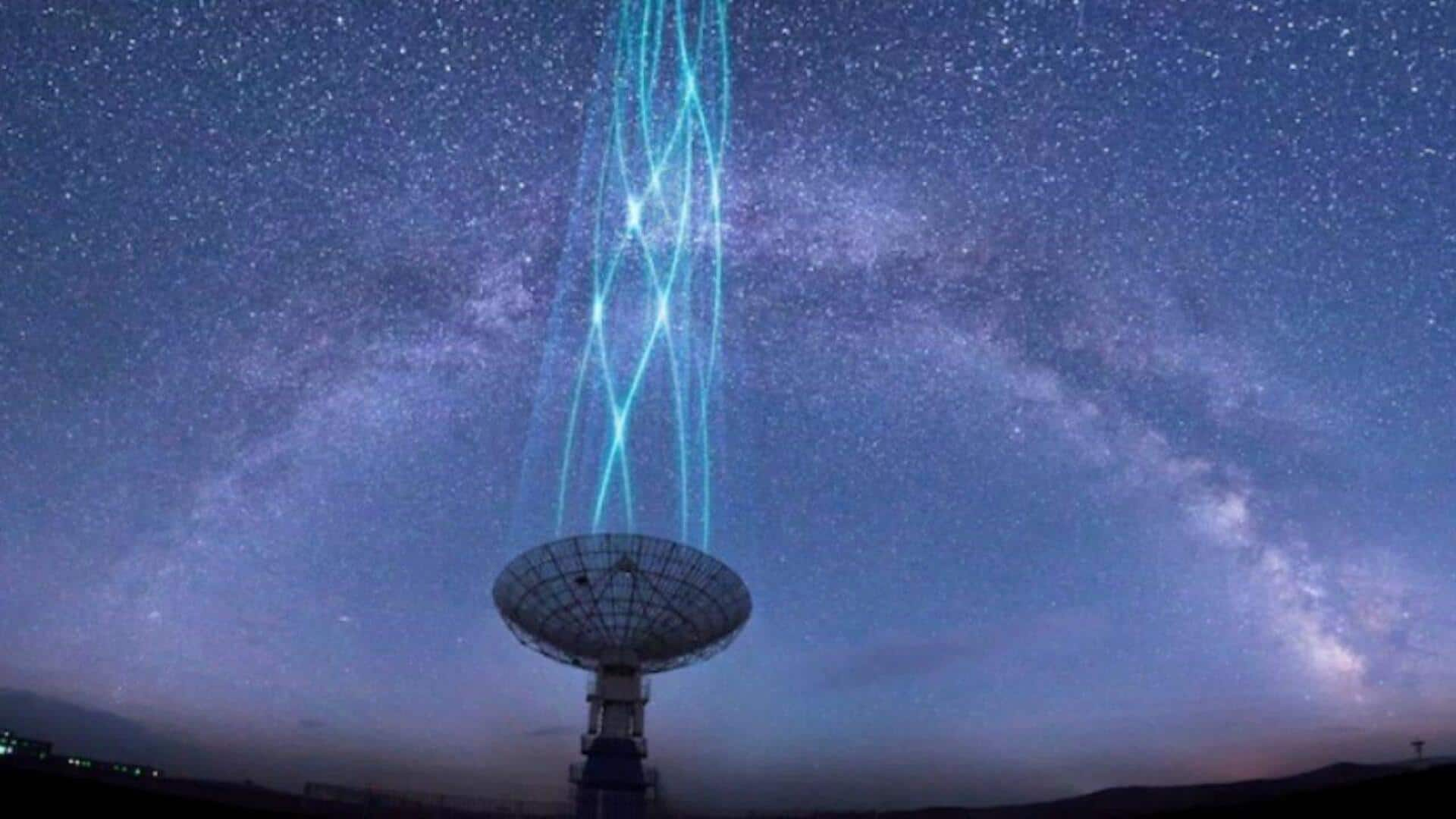
Scientists develop new method to detect alien radio signals
What's the story
In a major breakthrough, a team of astronomers has devised a revolutionary technique to spot possible signs of alien life.
The study, which will soon be published in The Astronomical Journal, describes a method that allows the detection of smaller bandwidth radio signals. These are similar to those we use to communicate with our own spacecraft.
The TRAPPIST-1 star system, just 41 light years away, served as the testing ground for the approach.
Star system
TRAPPIST-1: A promising system for extraterrestrial life
The TRAPPIST-1 star system hosts a cool red dwarf star, orbited by seven rocky exoplanets the size of Earth. Three of these worlds lie within their star's habitable zone, where they could support water and life.
While they didn't detect any alien technosignatures during their study, the astronomers successfully demonstrated their technique could be used to intercept communications not intended for deep space reception.
Sensitivity issue
Overcoming limitations in detecting alien signals
Nick Tusay, the study's lead author and an astronomer at Penn State University, explained that most searches for extraterrestrial life assume a powerful signal.
However, our receivers have a sensitivity limit to a minimum transmitter power beyond anything we unintentionally send out.
He suggested that with better equipment such as the upcoming Square Kilometer Array, we could soon be able to detect signals from an alien civilization communicating with its spacecraft.
Detection method
The team's strategy
The team's strategy was to wait for planet-planet occultations, where one planet passes in front of another from our perspective on Earth.
This event provides a unique opportunity to catch radio "spillover" of a signal being sent from the further world to the nearer one.
To try and capture such communications, the researchers employed the Allan Telescope Array, scanning TRAPPIST-1 for a record-breaking 28 hours - the longest single-target search in this star system.
Findings
Results and future applications of the technique
The team predicted seven potential planet-planet occultations. These events produced some 2,200 candidate radio signals that coincided with the astronomical occurrences.
Although none were confirmed as alien transmissions, their ability to identify promising signals validates their technique's potential for detecting everyday radio signals in other stellar neighborhoods.
Tusay emphasized that the methods and algorithms developed for this project can eventually be applied to other star systems, potentially increasing our chances of finding regular communications among planets beyond our solar system.